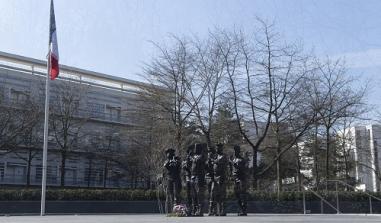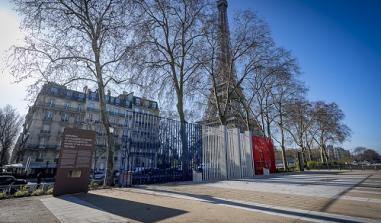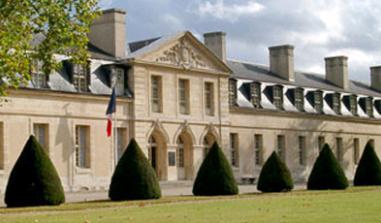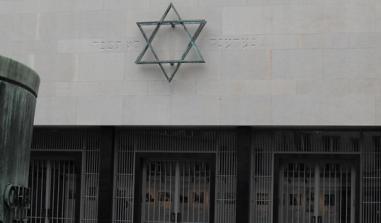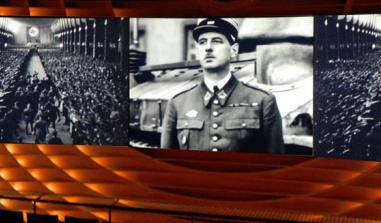La Chapelle Saint-Louis de l' Ecole Militaire
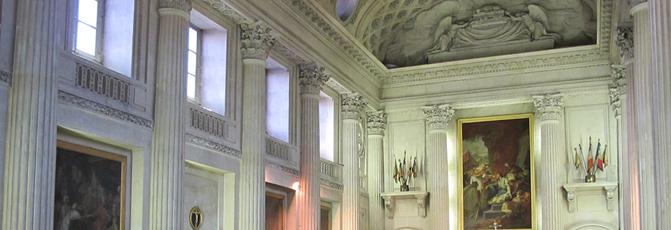
Intérieur de la Chapelle. Source : site orchestredelalliance.fr
Built during the reign of Louis XV, la chapelle St-Louis de l'Ecole Militaire is original evidence of the architectural heritage of the 18th century.
Built during the reign of Louis XV, la chapelle St-Louis de l'Ecole Militaire is original evidence of the architectural heritage of the 18th century.
In 1751, Louis XV decided to build a royal military school on the plain of Grenelle. The project was entrusted to his favourite architect, Ange-Jacques Gabriel. Work on the school began in 1753 and lasted more than thirty years, during the course of which financial problems disrupted the initial project. The original plans provided for the construction of a majestic chapel in the middle of the enclosure. In 1768, Gabriel proposed a second project, in which the chapel was to form part of the interior of the main building. Louis XV laid the foundation stone of the chapel on 5 July 1769. Upon its completion in 1773, the chapel was dedicated to Saint Louis, the patron saint of the army. Until 1788, it was open for worship and welcomed students and staff from the military school. Bonaparte received his confirmation there in 1785. Devastated during the Revolution, the chapel was turned into a canteen and then a feed and weapons depot. Its furnishings were dispersed. During the funeral of Marshal Joffre in 1931, the chapel was definitively cleared of all the items kept there. Its furnishings were recovered during the course of the 1930s and it was restored as a Catholic place of worship in 1951.
The chapel is 35 metres long and 13 metres wide. It consists of a unique rectangular nave divided into eight equal spans, the last of which forms the chancel. The spans are separated by Corinthian columns that support a lowered arch-shaped vault. The windows of the ground floor have been blinded and now hold paintings representing the life of Saint Louis. These nine works illustrate the main events in the life of the king. The chapel also has one of the panes of a triptych from the Renaissance period. Above the main entrance and along the full width of the chapel there is a gallery supported by four ionic columns on which a modern organ has been placed.
The back wall, which is located behind the chancel, is decorated with two Corinthian columns similar to those of the nave. The altar includes a tomb made of white marble, decorated with a gilded bronze wreath. Two low reliefs attributed to the sculptor Pajou are detaching themselves from the walls above the tribune and behind the altar. The reliefs depict child angels lifting a cross in the clouds and the scene of the Apocalypse of Saint John. On either side of the chancel are two doors that provide access to the sacristy. Above these doors, two walled-up openings indicate the site of the galleries where important hosts previously sat to listen to mass. Nowadays, flags representing the colours of the French army since the reign of Louis XV and have been installed there.
The current throne is decorated with raised patterns gilded with gold leaf and a medallion representing an eagle with outstretched wings. Under the chapel there is a crypt in which contains the bodies of the first governor of the school and of Pâris Duverney, an adviser to Louis XV. The chapel is open on rare occasions only, for religious ceremonies or concerts organised by the ministry of defence.
The restoration of this unique monument, for which the Department of Defence is responsible, was included in a Culture and Defence protocol signed on the 17th September 2005.
La Chapelle Saint-Louis de l'Ecole militaire 1 place J'offre Paris 7° Metro station: Ecole militaire
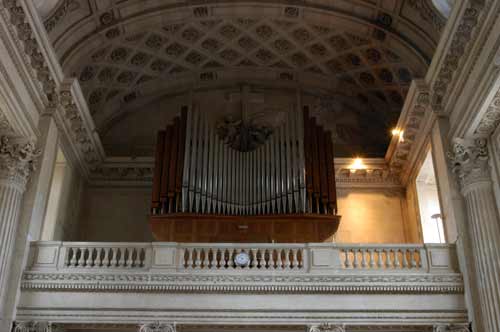
Orgue de la Chapelle Saint-Louis. Photo Jacques Robert

Photo MINDEF/SGA/DMPA JP Le Padellec
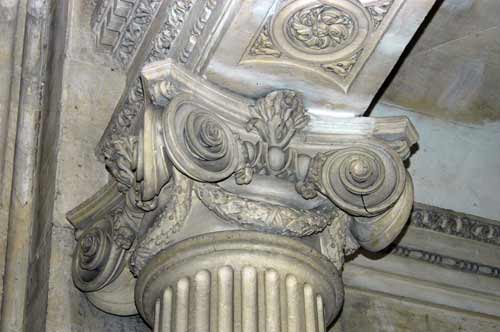
Ecole militaire - chapiteau. Photo JP Le Padellec
Practical information
1 place Joffre 75007
Paris
La chapelle n'est ouverte qu'à de rares occasions lors de cérémonies religieuses ou de concerts organisés par le ministère de la Défense.



